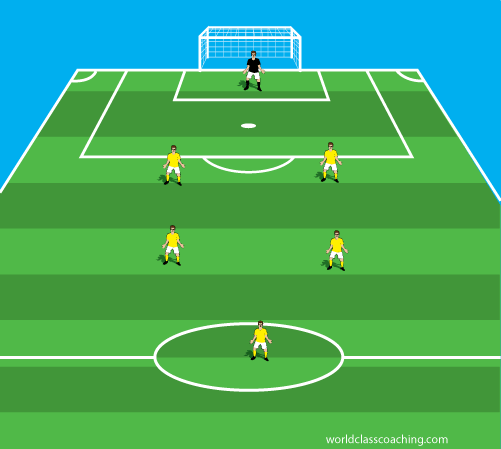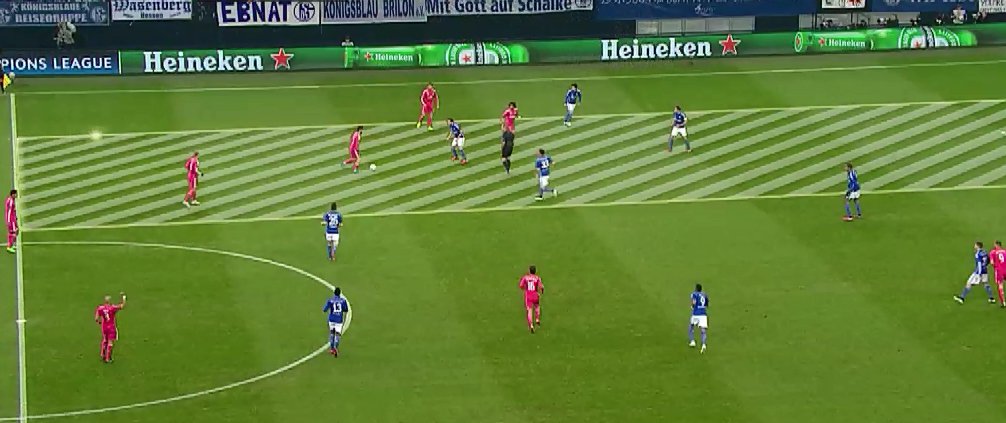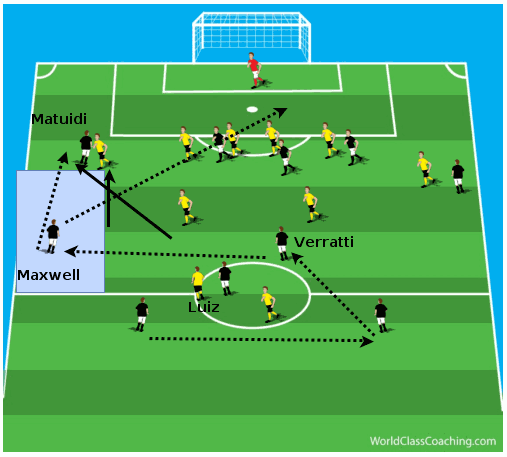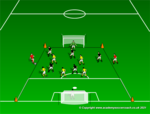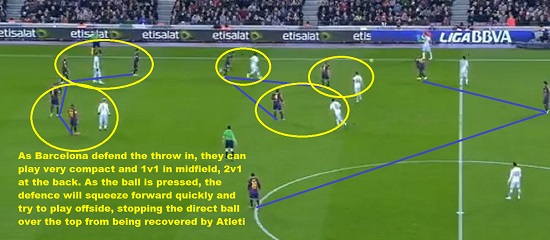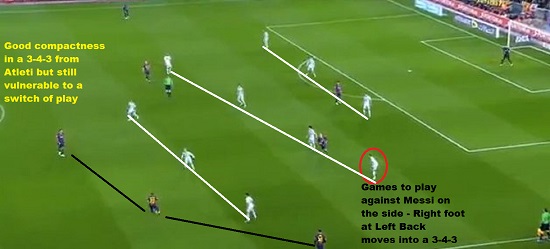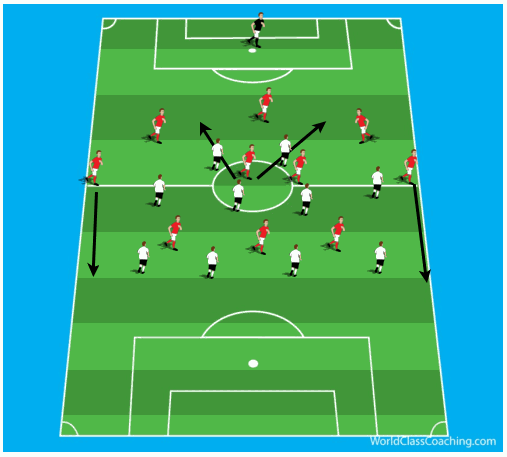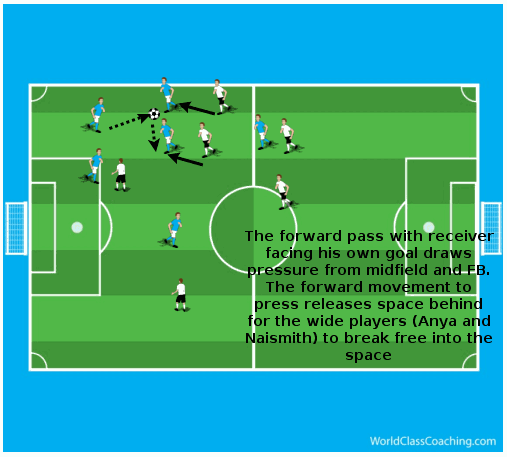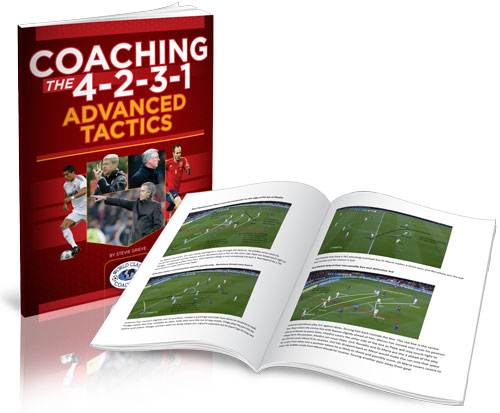Stopping Bayern’s Positional Play with Man-Man Marking
By Stevie Grieve
Pep Guardiola a main exponent of ‘positional play’ (or ‘Juego de posicion’ in Spanish) and uses a system based on overloads via occupying multiple defenders, occupying specific spaces, creating overloads and spaces to attack into whenever possible, and looking for ways to turn 11v11 into a 2v1 or 3v2 by placing players in areas where a zonal defence can be exploited.
A common feature of this is positioning a player in a pocket of space between the lines and in particular in the channels between wide and central players while between the lines. If a defender comes out of his zone to press, this leaves a gap for another to move into, and often de-stabilizes the defence for a few seconds, which is often exploited and leads to scoring chances.
If a player is unable to receive in any position, often they will only stay there for 2-3 seconds then make another quick run; the position will be interchanged with someone else, and the defenders have the decision – mark or stay in zone. The attackers regularly rotating positions causes confusion and often leads to Bayern overloading 2v1 or even leaving someone 1v0 in a dangerous area against the defensive line.
With the regular movement and occupation of several defenders with 1 or 2 players, this frees up players in defence or midfield to overload, gain control of the centre of the field then force the defence deeper.
Playing against positional play with a zonal defence is a job which requires a well drilled team and have the ability to deal with playing 3v2 or 4v3 in wide zones, but
Continue reading
